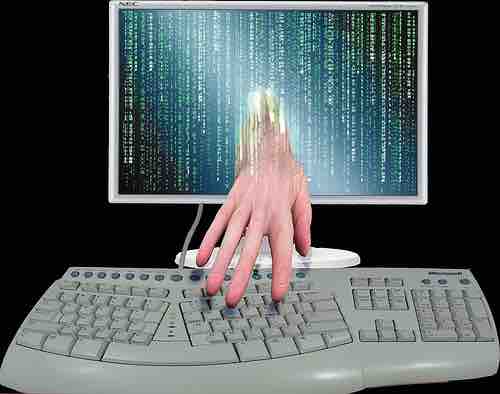Forced Entry
The creation and widespread use of new technology brings along with it many benefits. However, new and previously unaccounted-for dangers arise as well. Cybercrime is one such danger. It is defined as offenses that are committed against individuals or groups of individuals with a criminal motive to intentionally harm the reputation of the victim or cause physical or mental harm to the victim, directly or indirectly, using modern telecommunication networks such as the Internet (chat rooms, emails, notice boards, etc.) and mobile phones (SMS/MMS). Such crimes may threaten a nation's or individual's security and financial health. Issues surrounding this type of crime have become high-profile, particularly those surrounding hacking, copyright infringement, and child abduction. There are also problems of privacy when confidential information is lost or intercepted, lawfully or otherwise.
Computer crime encompasses a broad range of activities. Generally, however, it may be divided into two categories: crimes that target computers directly, and crimes facilitated by computer networks or devices, the primary target of which is independent of the network or device. Crimes that primarily target computer networks or devices include computer viruses, denial-of-service attacks, and malware. Crimes that use computer networks or devices to advance other ends include cyberstalking, fraud and identity theft, information warfare, and phishing scams.
Computer Fraud
Computer fraud is any dishonest misrepresentation of fact intended to get another to do or refrain from doing something which causes loss. In this context, the fraud will result in obtaining a benefit by one of a number of means:
- Altering computer input in an unauthorized way. This requires little technical expertise and is not an uncommon form of theft by employees. Altering data before entry or entering false data, or entering unauthorized instructions or using unauthorized processes are the most common examples.
- Altering, destroying, suppressing, or stealing output, usually to conceal unauthorized transactions. This is difficult to detect.
- Altering or deleting stored data.
- Altering or misusing existing system tools or software packages, or altering or writing code for fraudulent purposes.
Other forms of fraud may be facilitated using computer systems, including bank fraud, identity theft, extortion, and theft of classified information.
Identity Theft
Identity theft is a form of stealing a person's identity in which someone pretends to be someone else, typically in order to access resources or obtain credit and other benefits in that person's name. The victim of identity theft (here meaning the person whose identity has been assumed by the identity thief) can suffer adverse consequences if he or she is held accountable for the perpetrator's actions. Identity theft occurs when someone uses another's personally identifying information, like name, Social Security number, or credit card number, without permission, to commit fraud or other crimes.
Identity fraud is often but not necessarily the consequence of identity theft. Someone can steal or misappropriate personal information without then committing identity theft using the stolen information; this can happen when a major data breach occurs and the information of a large number of people is compromised.
Documented Cases of Cybercrime
One of the highest profiled banking computer crimes occurred during a course of three years, beginning in 1970. The chief teller at the Park Avenue branch of New York's Union Dime Savings Bank embezzled over $1.5 million from hundreds of accounts.
In 1983, a nineteen-year-old UCLA student used his PC to break into a Defense Department international communications system.
Between 1995 and 1998, the Newscorp satellite pay-to-view encrypted SKY-TV service was hacked several times during an ongoing technological arms race between a pan-European hacking group and Newscorp. The original motivation of the hackers was to watch Star Trek re-runs in Germany, which was something Newscorp did not have the copyright to allow.
In February 2000, an individual under the alias of MafiaBoy began a series denial-of-service attacks against high profile websites, including Yahoo!, Amazon.com, Dell, E*TRADE, eBay, and CNN. About 50 computers at Stanford University, as well as computers at the University of California at Santa Barbara, were among the zombie computers sending pings in DDoS attacks. On August 3, 2000, Canadian federal prosecutors charged MafiaBoy with 54 counts of illegal access to computers, plus a total of 10 counts of mischief to data for his attacks.
On March 2, 2010, Spanish investigators arrested three individuals for the infection of over 13 million computers around the world. The "botnet" of infected computers included PCs inside more than half of the Fortune 1,000 companies and more than 40 major banks, according to investigators.
In August 2010, the international investigation Operation Delego, operating under the aegis of the Department of Homeland Security, shut down the international pedophile ring Dreamboard. The website had approximately 600 members and may have distributed up to 123 terabytes of child pornography (roughly equivalent to 16,000 DVDs). To date, this is the single largest U.S. prosecution of an international child pornography ring; 52 arrests were made worldwide.

Cybercrime
Cybercrime can be committed using computer viruses and other various programs that can track any information you enter into computer networks.